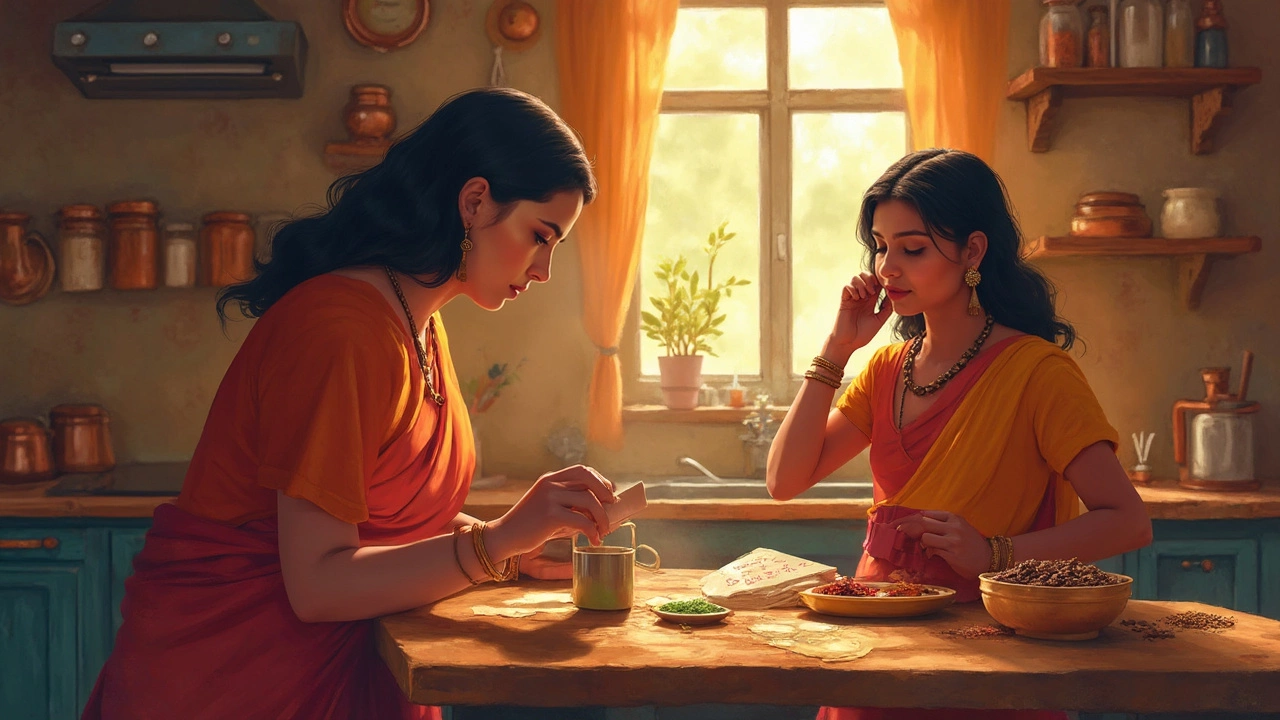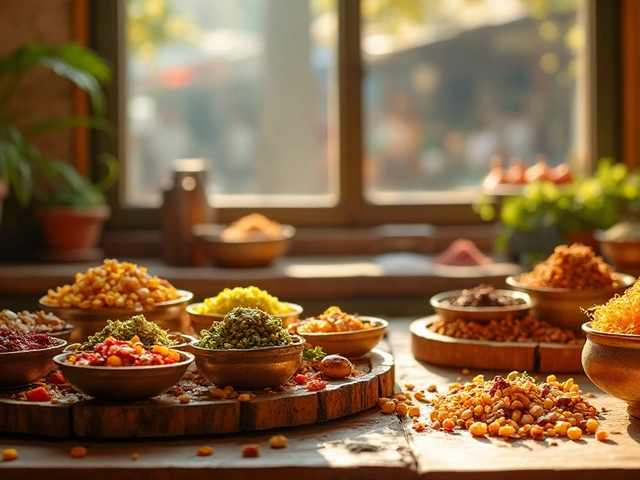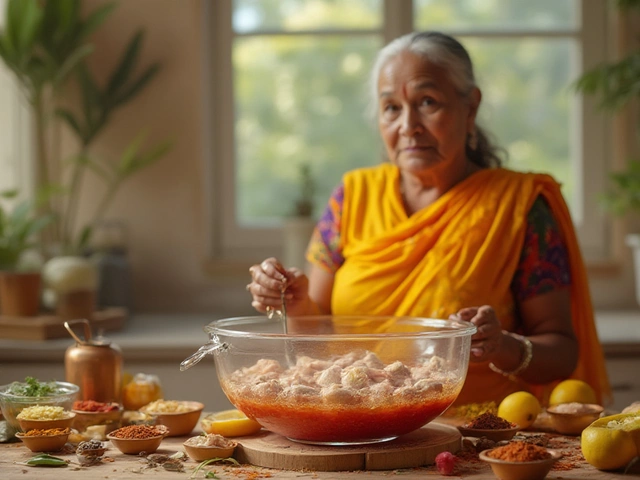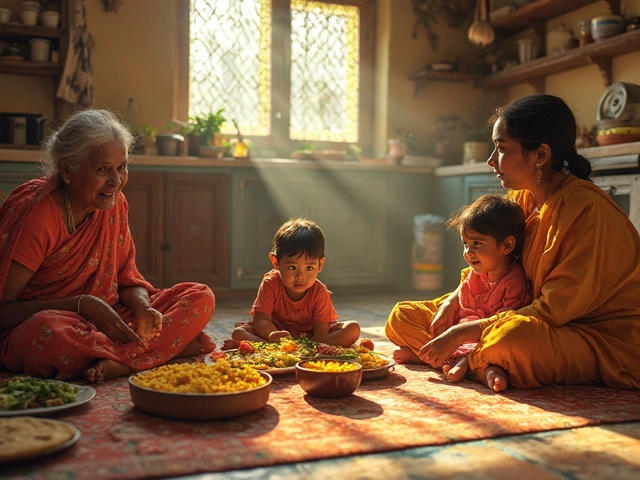You’re staring at your bag of dal, and the big question hits: how much should you really cook for two people? Too little and you’re left with hungry tummies. Too much and suddenly your fridge is full of dal for days. Most times, about ¾ cup (roughly 150 grams) of uncooked dal does the trick for two average eaters. This gives you enough for generous bowls—even if everyone asks for seconds.
If you’re dealing with kids (like my two, Jasper and Leona), you might want a little less because they’ll skip the dal and go straight for the rice or roti. But if you’ve got two adults who love dal, stick closer to the higher side so no one feels cheated. The type of dal matters too—masoor and moong cook up lighter, while chana and toor feel heavier. It’s simple: lighter dals, a touch more; heartier dals, a touch less. Stick to this, and your meal always lands just right.
- The Perfect Dal Quantity for Two
- Factors That Can Change How Much Dal You Need
- Tips for Batch Cooking and Leftovers
- Simple Serving Tricks for Better Dal
The Perfect Dal Quantity for Two
If you’re making dal for two people, you want to hit that sweet spot where everyone gets a full portion and maybe there’s just a spoonful left for someone who wants seconds. After plenty of trial and error (and a few nights of emergency omelets), the magic number turns out to be about ¾ cup (150 grams) of uncooked dal. This amount works whether you’re using moong, masoor, or toor dal—and usually gives you around 2 to 2.5 cups of cooked dal, which is solid for a dinner with rice, roti, or both.
If you’re the measuring type or feeding people with big appetites, here’s a simple way to look at it:
- Light eaters (kids or folks who eat small portions): ½ cup (100 grams) uncooked dal usually covers it.
- Average adults: ¾ cup (150 grams) does the job.
- Really hungry or love-dal types: Up the amount to 1 cup (200 grams).
Not every dal cooks up the same, so here’s a quick cheat sheet:
| Dal Type | Uncooked Amount for 2 | Cooked Yield |
|---|---|---|
| Masoor (red lentils) | ¾ cup (150g) | ~2 cups |
| Moong dal | ¾ cup (150g) | ~2 cups |
| Toor/arhar dal | ¾ cup (150g) | ~2–2.5 cups |
| Chana dal | ¾ cup (150g) | ~2.5 cups |
One thing I’ve learned: rinse the dal a few times before cooking. It removes extra starch and dust, so you get a cleaner taste and your dal doesn’t get gummy. Stick to these amounts, and you’ll avoid both sad tiny servings and week-old leftovers hiding in the back of your fridge. Always better to have fresh dal than struggle with giant pots of reheated mush.
Factors That Can Change How Much Dal You Need
It’s wild how the dal quantity for two people can swing, depending on what else is going on in your kitchen. Before you grab your measuring cup, think about a few practical things:
- Appetite Sizes: Two adults with big appetites might wipe out what you thought was enough. If one person is notorious for skipping seconds, you can always scale back a bit.
- What Else Is On The Table? If dal’s the star with just roti or rice, stick to the usual ¾ cup uncooked. But if you’re adding sides like sabzi, salad, or dahi, you can drop down to about half a cup (100 grams) for two.
- Dal Type: Heavier dals (like chana, urad, or toor) fill you up faster. Lighter dals, like moong and masoor, don’t sit as heavy. Here’s a quick cheat sheet:
| Dal Type | Ideal Uncooked Amount for 2 |
|---|---|
| Moong/Masoor | 80-90 grams (about ½ cup) |
| Toor/Chana/Urad | 100-120 grams (about ⅔ cup) |
- Serving Style: Thick and creamy dal needs less quantity, since people scoop smaller portions. If you’re making a thin, soupy dal, people ladle on more. Watery dal goes fast, so make extra for that style.
- Leftover Lovers or Haters: Planning for leftovers isn’t everyone’s style. If you like extra for lunchboxes or paratha stuffing the next day, cook a little more.
- Kids and Elders: Kids often eat less, and elders may avoid heavier dals. Adjust down for light eaters or if you know someone at your table isn’t that hungry.
The trick is to keep an eye on how your family eats. Once you watch your eaters a few times, it becomes second nature to adjust.

Tips for Batch Cooking and Leftovers
Cooking extra dal can be a total lifesaver for busy weeks. The good news? Most dals freeze and reheat better than you’d think. If you’re already chopping onions and garlic, it barely takes any more effort to double up your dal recipe. Here’s how to do it smart—without ending up with mushy leftovers or bland bowls the next day.
- Portion control is everything. After the dal cooks and cools, split it up into single meal containers. This way, you only thaw what you need. No one likes soggy, reheated dal for days in a row.
- Leave out the tempering (tadka) before freezing. That sizzling mix of spices, onions, or garlic tastes way fresher if you add it right before serving, not before you freeze. Just warm up your batch-cooked dal, heat up a quick tadka, and pour it on.
- Label your containers. Dal might look the same after a week in the freezer, so slap on a quick label with the date and type (masoor, toor, chana, etc.).
- Watch out for texture. Dals with a higher starchy content, like chana or urad, tend to thicken up a lot after sitting. Just add a splash of hot water and stir as you reheat—problem solved.
- Keep sides flexible. Batch-cooked dal goes just as well with roti on Monday, rice on Tuesday, or tucked into wraps with veggies later in the week. No more boring repeats!
If you’re still deciding how much to make, check out this quick chart for batch quantities that should cover most households:
| Uncooked Dal | Meals (2 people) | Cooking Time (mins) |
|---|---|---|
| 1 cup (200g) | 2-3 meals | 25-30 |
| 2 cups (400g) | 5-6 meals | 25-30 |
Don’t worry about losing flavor—the trick is just heating with a little added water and fresh tadka for each round. That way, your simple dal recipe always tastes like it’s made from scratch—even on your third helping.
Simple Serving Tricks for Better Dal
You don’t have to be a chef to make your dal recipe simple and tasty. A few serving tricks can really take things up a notch and make dinner more fun for everyone—without piling on extra work.
The first easy move is to serve dal in pre-warmed bowls. Hot dal cools down fast, and those little heat-safe bowls keep it nice and steamy right to the last bite. Not just for looks—it genuinely helps the dal taste better.
Next up: toppings. Fresh coriander (cilantro) and a squeeze of lemon are the classics. They cut the heaviness and add a pop of color. My kids love a sprinkle of crispy fried onions—easy crunch and packs a punch. If you’re aiming for classic comfort, spoon some ghee or butter on top right before serving. Just a teaspoon makes the whole thing smell and taste richer.
- If you like a little heat, slice a green chili and serve it on the side. This lets everyone control their spice level.
- Offer a wedge of raw onion or a few slices of cucumber—the fresh crunch goes super well with warm dal and rice.
- Pair the dal with a simple salad or a little pickle. Both help balance flavors and make your meal feel more put-together—without effort.
Not sure if you’re serving enough? Here’s a quick guide:
| Uncooked Dal | Cooked Dal (approx.) | Perfect For |
|---|---|---|
| ½ cup (100g) | 2 cups | Light eaters |
| ¾ cup (150g) | 3 cups | 2 adults, hearty |
| 1 cup (200g) | 4 cups | Big appetites, some leftovers |
One last tip: Serve dal soon after you finish cooking. The longer it sits, the thicker and stickier it gets. If needed, stir in a little hot water before serving to keep that creamy texture everyone craves. These tricks keep your simple dal recipe both delicious and fuss-free every single time.
- Poplular Tags
- dal quantity
- simple dal recipe
- serving size
- cooking dal











